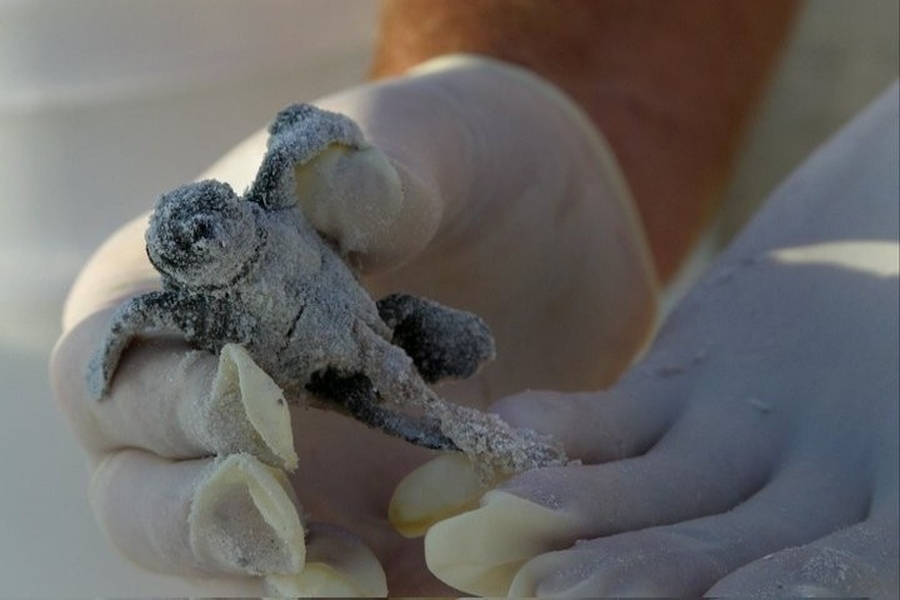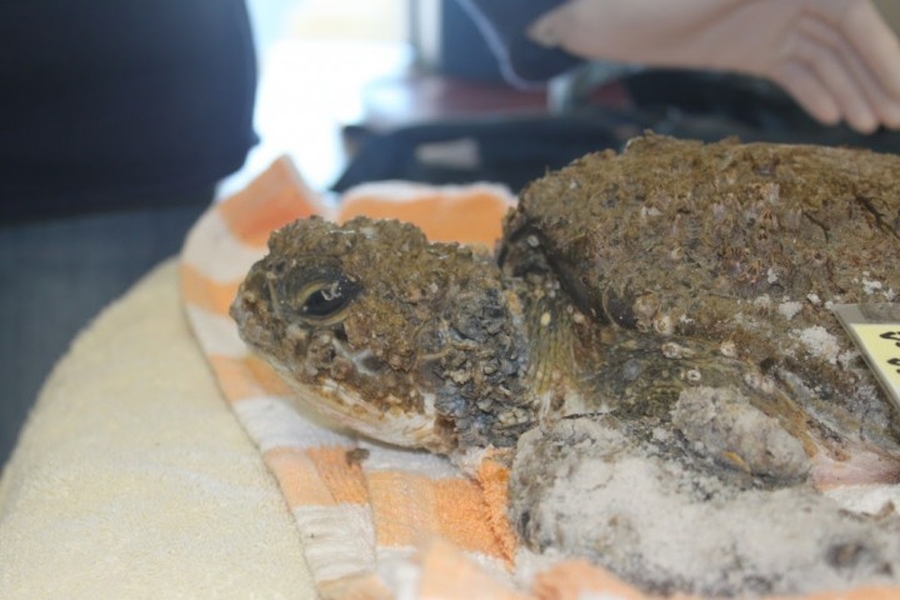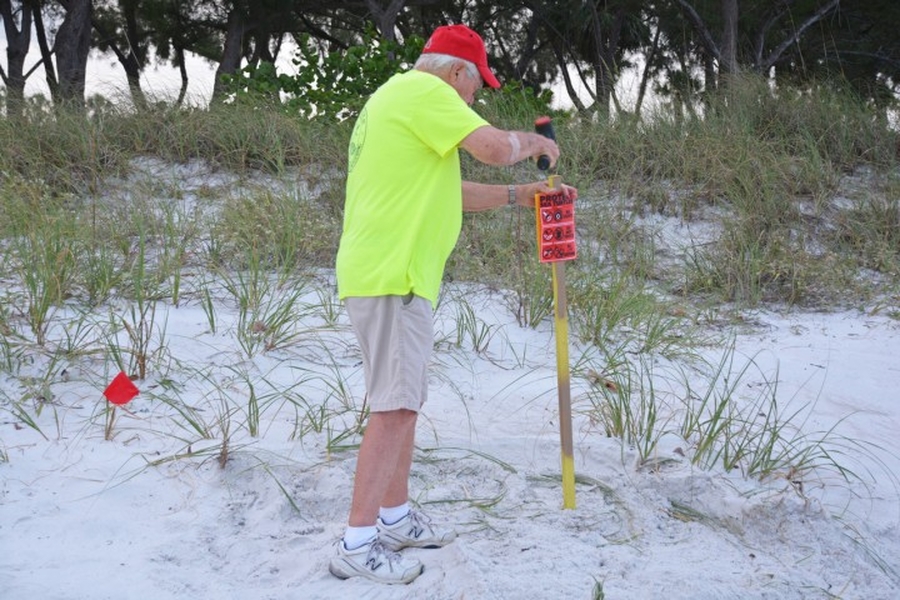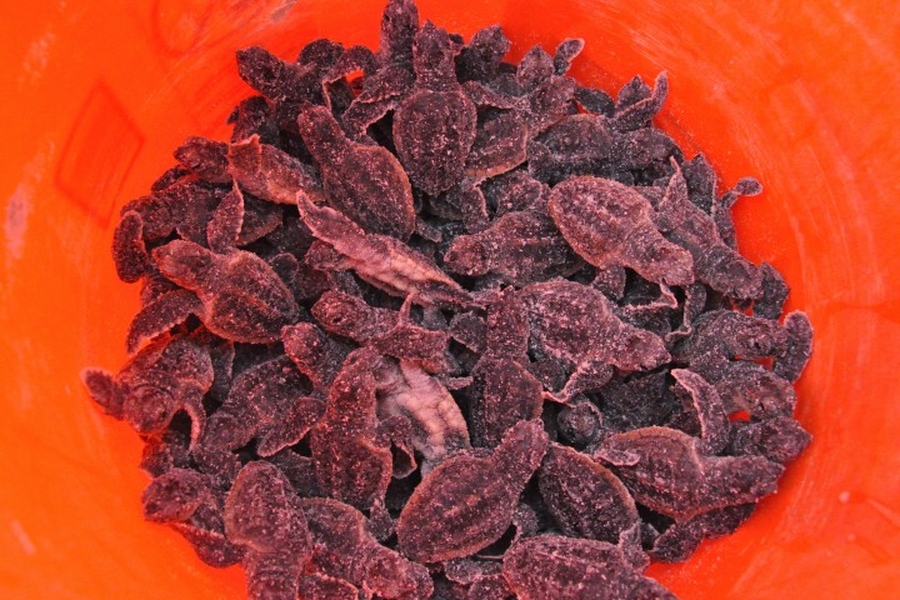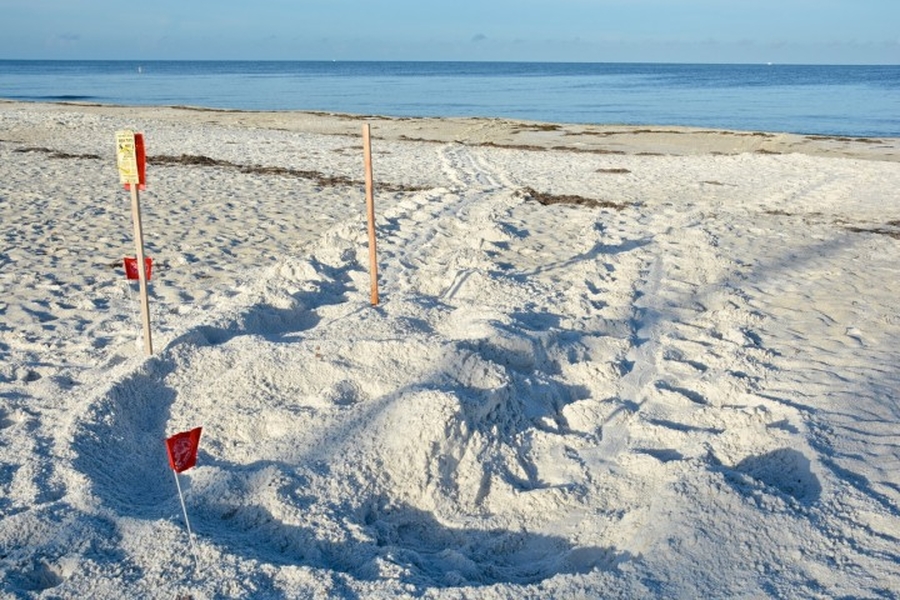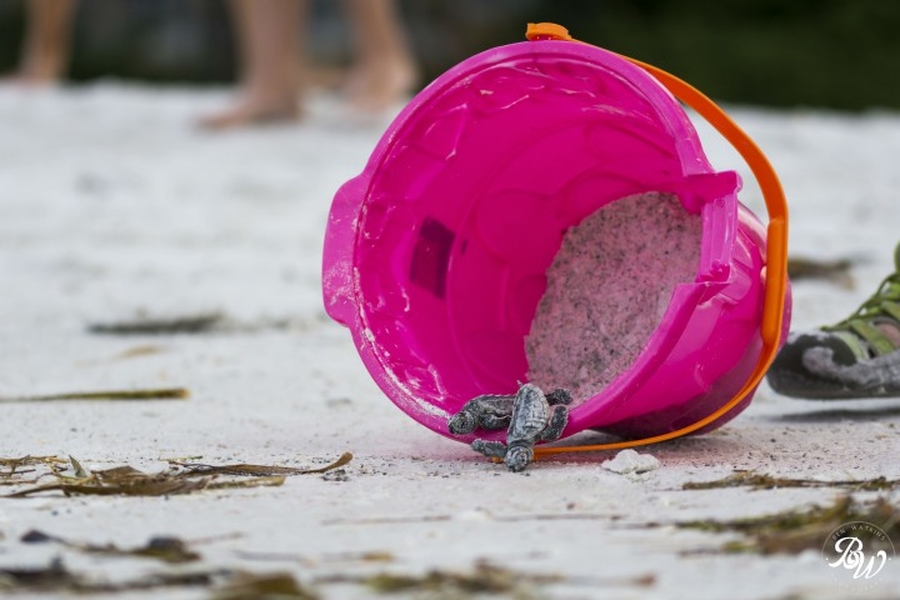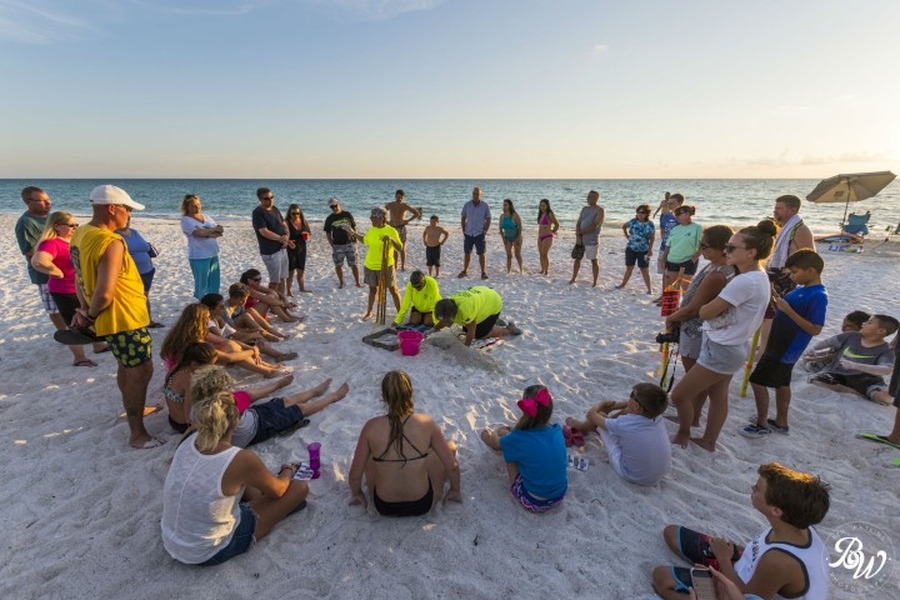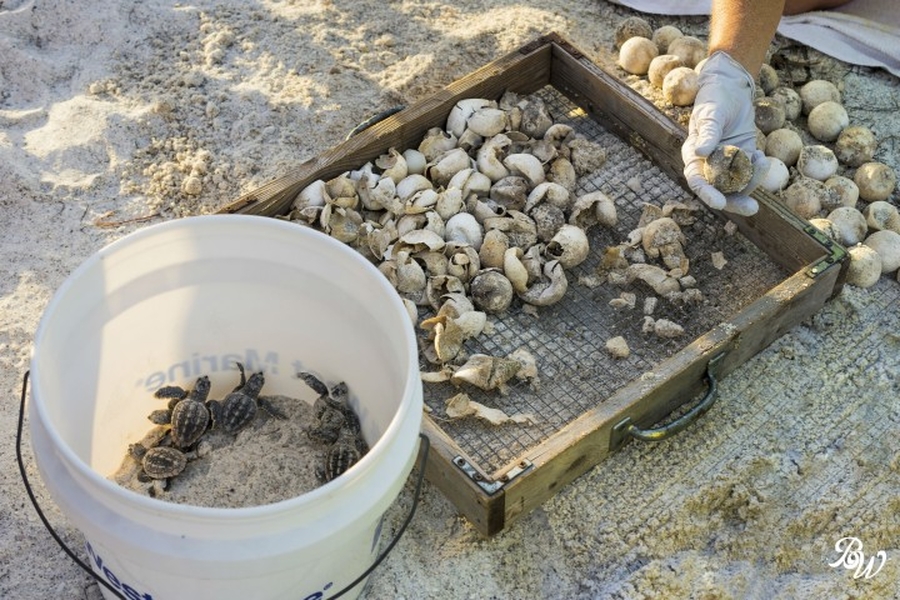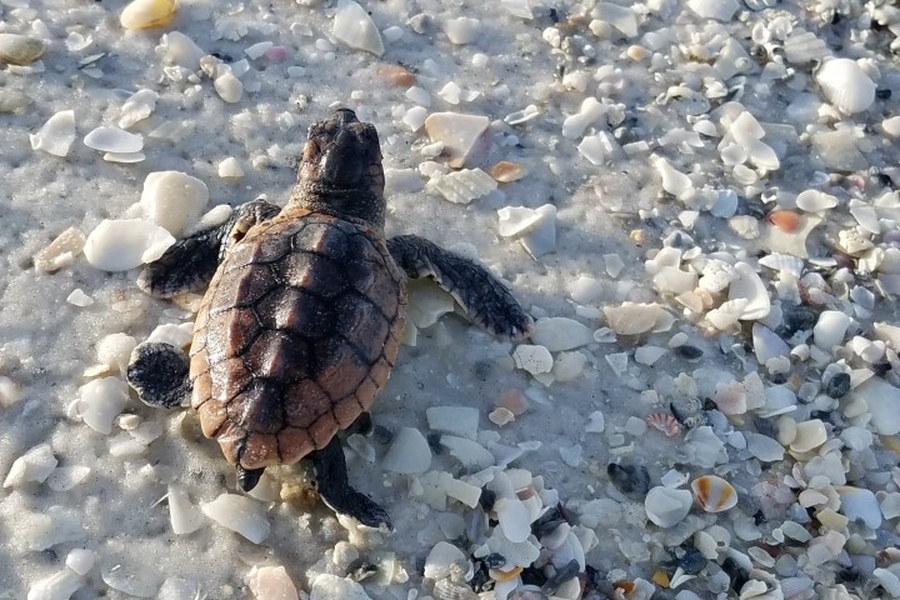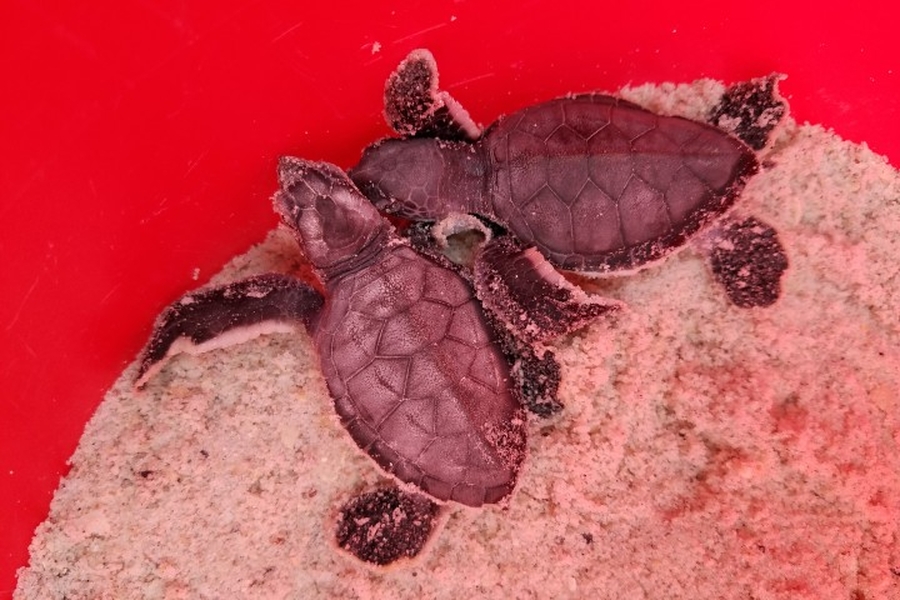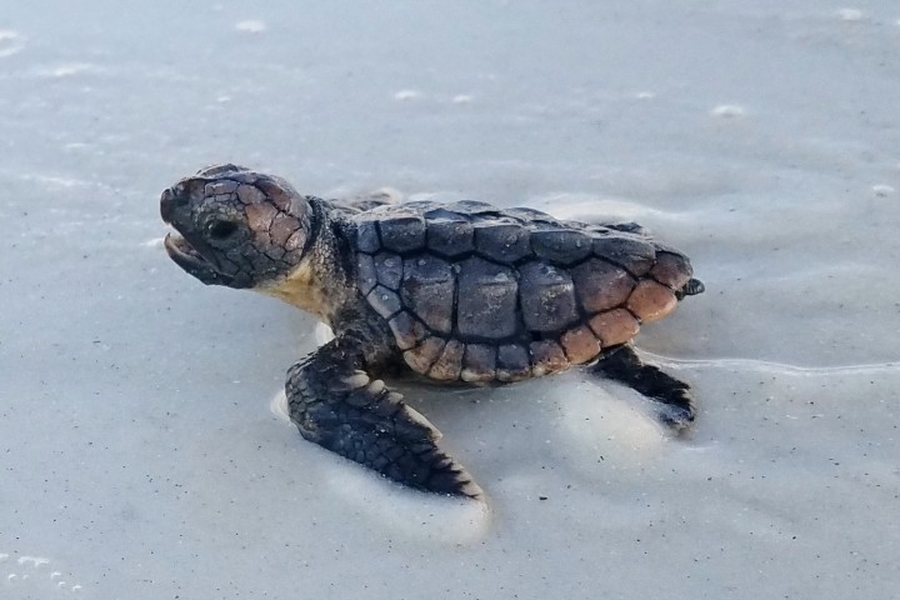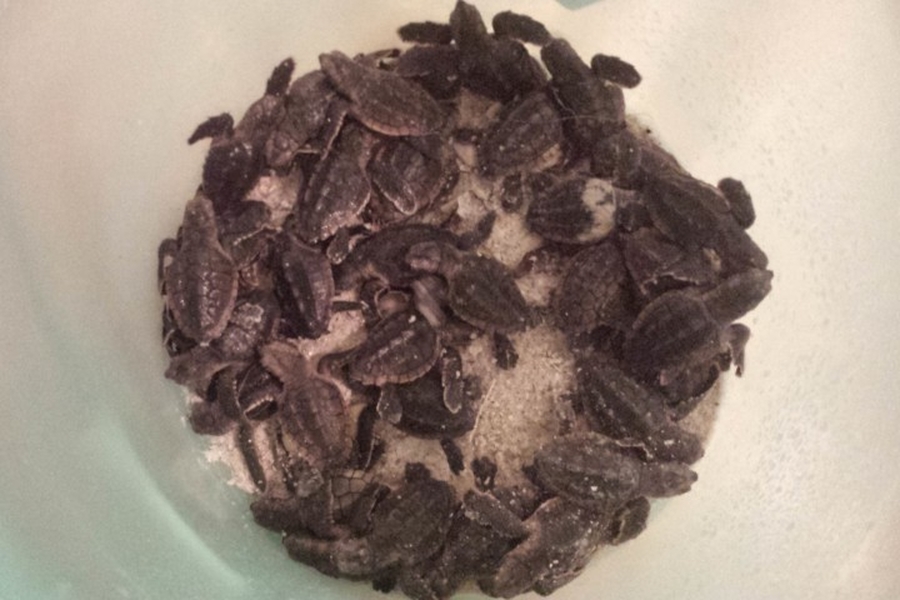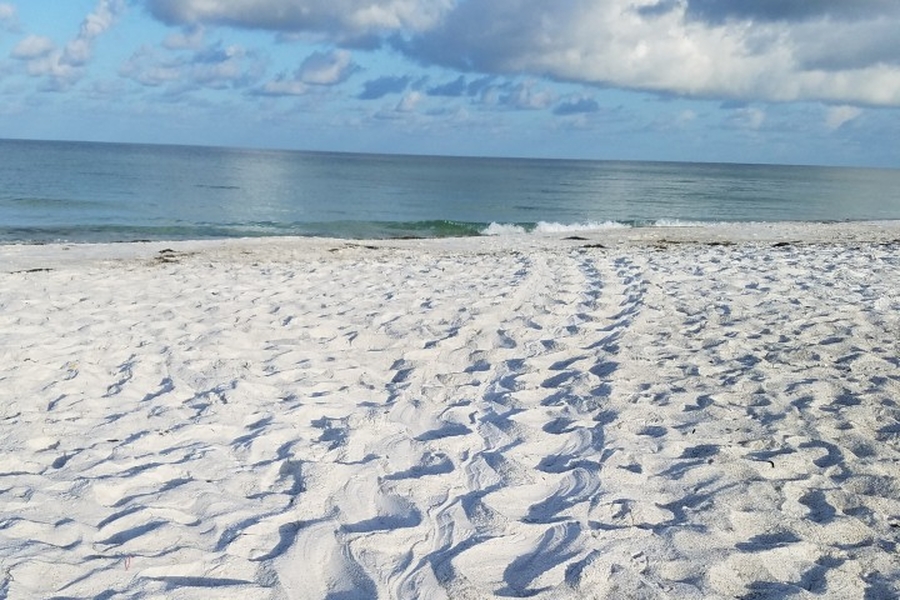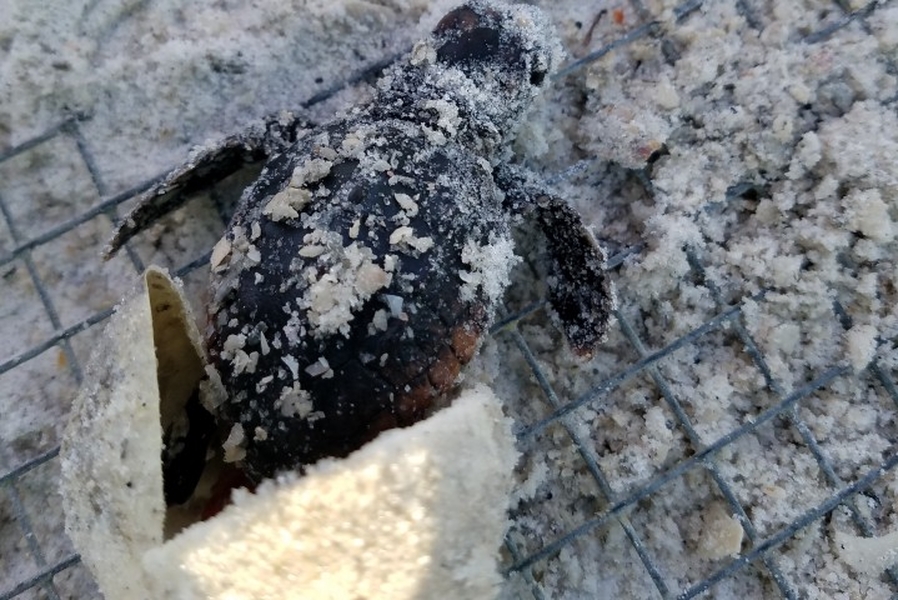Anna Maria Island
2024 Nesting Numbers
Nests |
Non-nesting Emergences |
|
4/27/2024 – 5/3/2024 |
2 |
1 |
5/4/2024 – 5/10/2024 |
4 |
3 |
5/10/2024 – 5/17/2024 |
42 |
35 |
5/18/2024 – 5/24/2024 |
50 |
47 |
5/25/2024 – 5/31/2024 |
40 |
74 |
6/1/2024 – 6/7/2024 |
47 |
107 |
6/8/2024 – 6/14/2024 |
83 |
107 |
6/15/2024 – 6/21/2024 |
118 |
100 |
6/22/2024 – 6/28/2024 |
106 |
113 |
6/29/2024 – 7/5/2024 |
72 |
107 |
7/6/2024 – 7/12/2024 |
72 |
110 |
7/13/2024 – 7/19/2024 |
28 |
21 |
7/20/2024 – 7/26/2024 |
10 |
13 |
Total for 2024 |
673 |
838 |
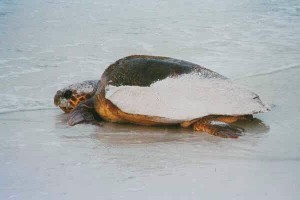 Five species of Sea Turtles swim and feed around Anna Maria Island (AMI). Our most common nester on our shoreline is the Loggerhead. AMI is 8.5 miles long and located just south of Tampa Bay on the central West Coast of Florida. From May to October Sea Turtles, visiting summer guests and island residents share AMI and call this island home.
Five species of Sea Turtles swim and feed around Anna Maria Island (AMI). Our most common nester on our shoreline is the Loggerhead. AMI is 8.5 miles long and located just south of Tampa Bay on the central West Coast of Florida. From May to October Sea Turtles, visiting summer guests and island residents share AMI and call this island home.
Sea turtles clearly play an important role in our marine ecosystems. Each sea turtle species uniquely affects the diversity, habitat and functionality of its environment. Whether by grazing on sea grass, controlling sponge distribution, feasting on jellyfish, transporting nutrients or supporting other marine life, sea turtles play vital roles in maintaining the health of the Gulf of Mexico and the shoreline of Anna Maria Island.
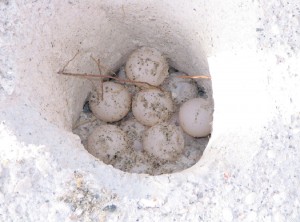 Sea turtle eggs directly and indirectly affect the vegetation, species distribution and stability of sandy shorelines. By supplying a concentrated source of high-quality nutrients, sea turtles improve their own nesting beaches. Limited nutrients in dune ecosystems, such a nitrogen, phosphorus, and potassium are partially provided to the ecosystem by unhatched sea turtle eggs. These vital nutrients allow for the continued growth of vegetation and subsequent stabilization of beach dunes. Stable dune systems provide a barrier that protects beachfront homes from storm damage. Dune vegetation also provides food for a variety of plant-eating animals and therefore can influence distribution of animal species along the shoreline.
Sea turtle eggs directly and indirectly affect the vegetation, species distribution and stability of sandy shorelines. By supplying a concentrated source of high-quality nutrients, sea turtles improve their own nesting beaches. Limited nutrients in dune ecosystems, such a nitrogen, phosphorus, and potassium are partially provided to the ecosystem by unhatched sea turtle eggs. These vital nutrients allow for the continued growth of vegetation and subsequent stabilization of beach dunes. Stable dune systems provide a barrier that protects beachfront homes from storm damage. Dune vegetation also provides food for a variety of plant-eating animals and therefore can influence distribution of animal species along the shoreline.
On AMI we have three municipalities and three laws to protect sea turtles. Parking motor vehicles on nesting habitat, artificial lights that can be seen from the nesting beaches and trash left on the beach can bring sea turtle recovery to a halt.
As sea turtle populations decline, so does their ability to perform vital roles in maintaining the health of the Gulf of Mexico. Death and injury in commercial fisheries, loss of important habitat, pollution and climate change are among the many human-caused threats pushing sea turtles towards extinction. More proactive conservation measures are needed to protect sea turtles and rebuild their populations to healthy levels so they can fulfill the full extent of their historic roles. At historic levels, sea turtles will help restore the health of our Gulf of Mexico.
